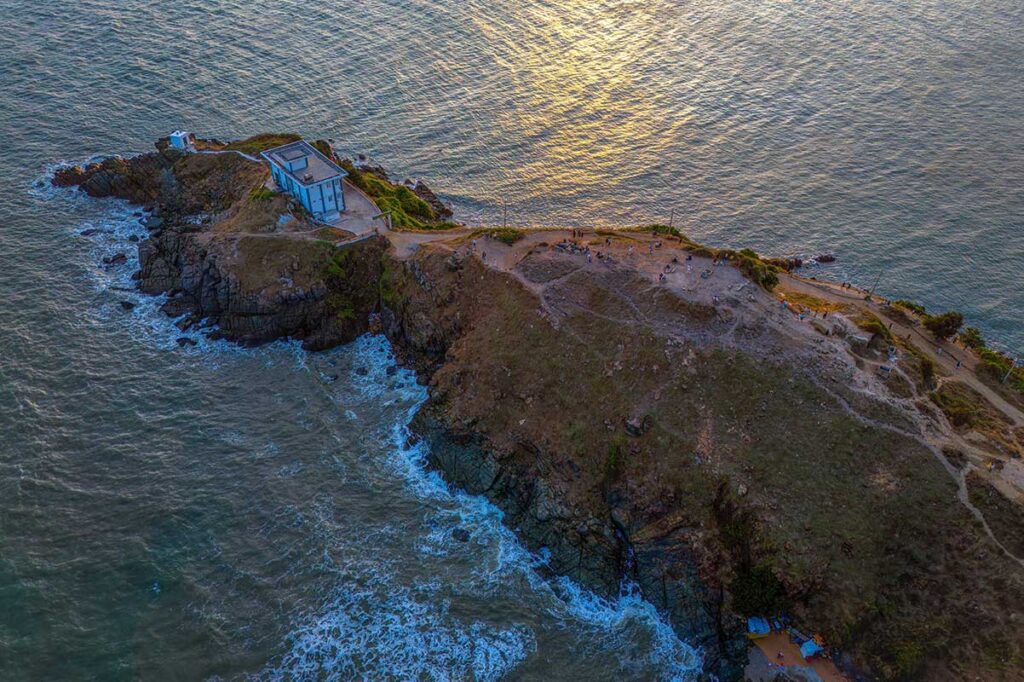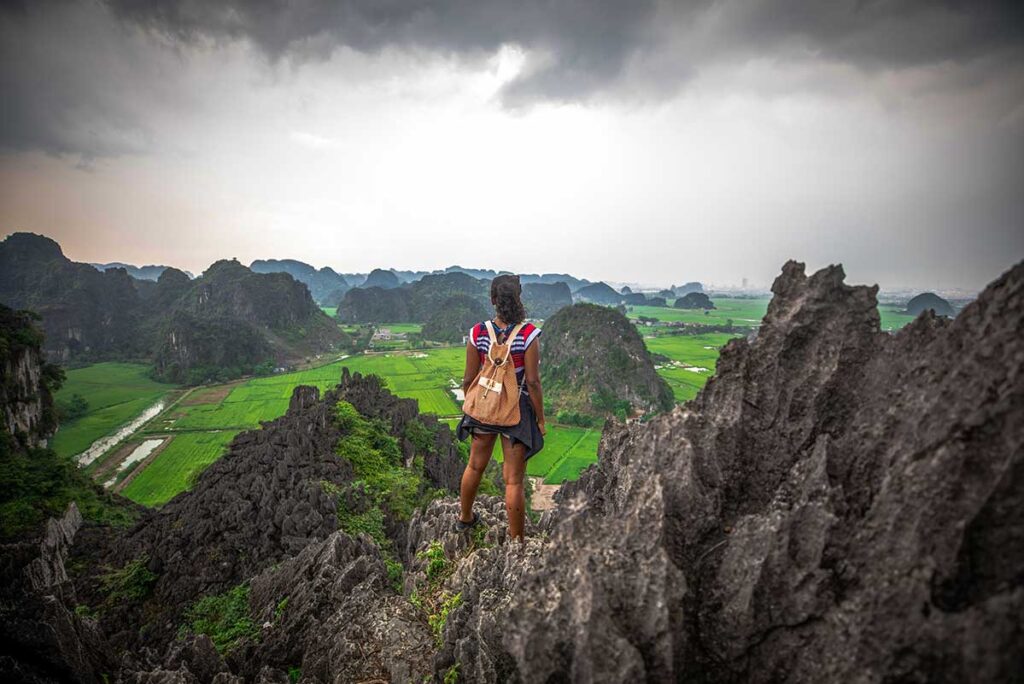What is Nghinh Phong Cape?
Nghinh Phong Cape (literally “Cape Facing the Wind”) is a rocky headland at the southern tip of Vung Tau Peninsula. From here the land stretches out into the sea, splitting the coast into two bays: Vong Nguyet Beach on one side and Huong Phong (Dua) Beach on the other. Both are small, natural beaches more for scenery than swimming.

Behind the cape rises Small Mountain, where the Christ the King Statue looks over the city, and just offshore you can spot Hon Ba Island. The cape itself is very open and exposed, which makes it a naturally windy spot. It’s not a developed attraction with polished facilities — more a public viewpoint where locals and tourists come for the views, the breeze, and the photo opportunities.
Things to Do and See at Nghinh Phong Cape
1. Heaven Gate

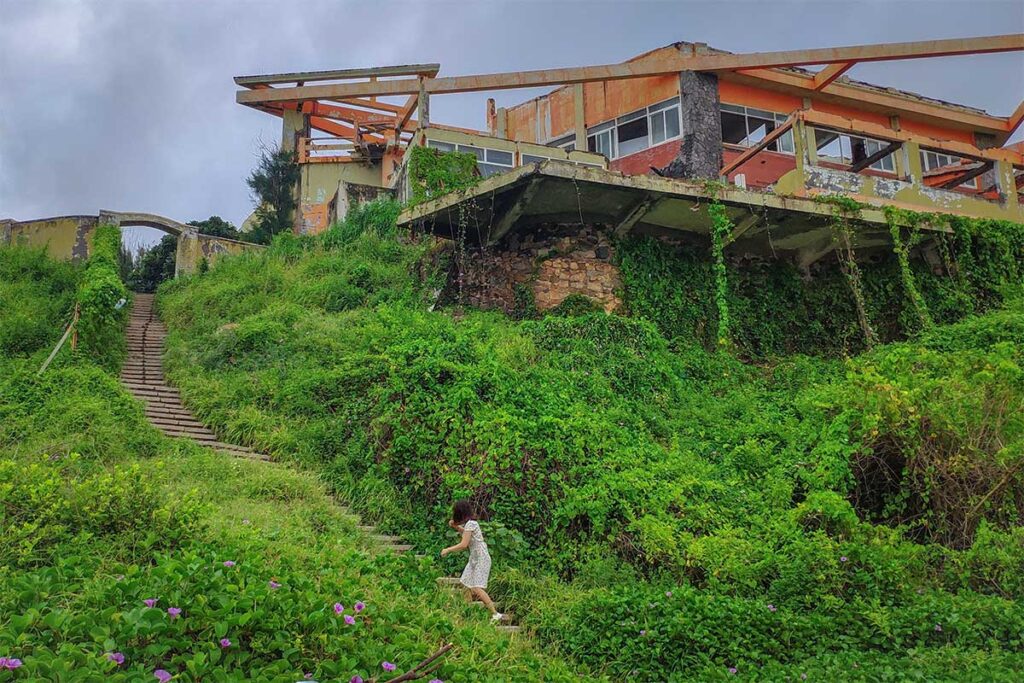
The so-called “Heaven Gate” is just a rectangular opening in a wall, part of an abandoned structure on the cape. Vietnamese visitors love it as a check-in photo spot, but for foreign tourists it’s best seen as a quirky landmark rather than a must-see attraction. It does frame the sea and the mountains nicely, though expect crowds in the late afternoon.
2. Sunrise & Sunset Views
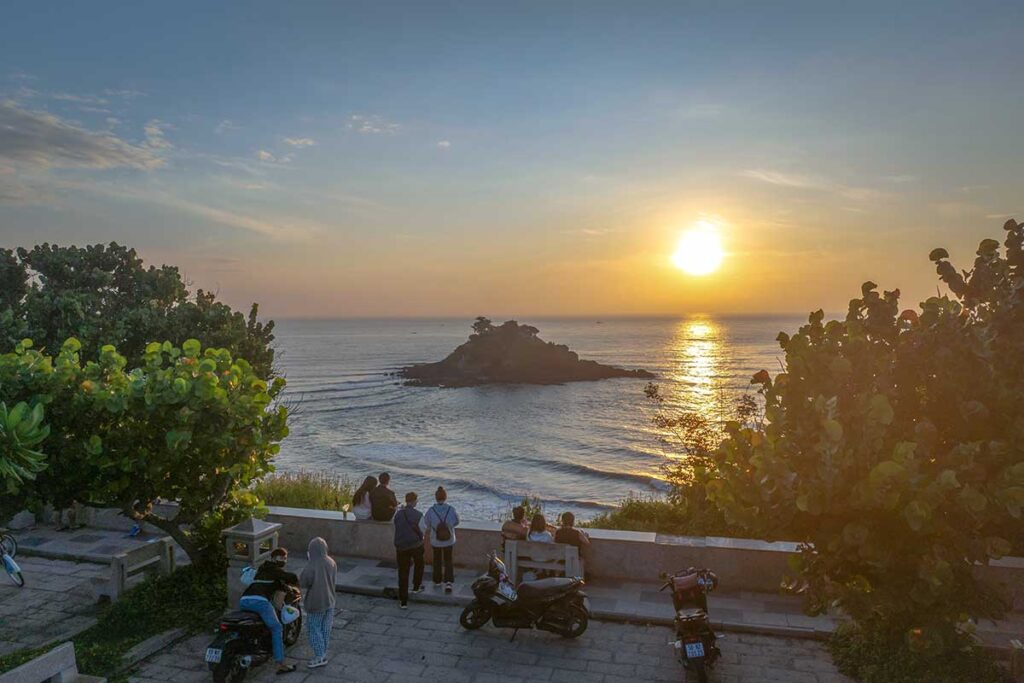
What really makes the cape worth visiting are the wide, open views of the sea. Come early in the morning for fresh air and relative quiet, or late in the day for dramatic sunsets. Sunset is the most popular time, so it can feel busy with people taking photos and having drinks by the shore.
3. Views of the Jesus Christ Statue

From the cape you get a good angle of Vung Tau’s giant Christ of King Statue on the nearby Small Mountain. It’s not as close as climbing up the statue itself, but it’s a nice perspective that shows the statue against the sea backdrop.
4. The Beaches (Vong Nguyet & Huong Phong/Dua Beach)

On either side of the cape are two small beaches. They look great from above, but they aren’t really practical swimming spots: the water is often rough, the waves are strong, and parts of the shore are rocky. Most people just enjoy the views rather than going down for a swim.
5. Local Fishing Scene
You’ll likely see Vietnamese men sitting with fishing rods along the rocks. It’s a popular local hobby because the rocky coast attracts fish. For visitors, it’s not really an activity to join in, but it adds to the atmosphere and gives a sense of daily life in Vung Tau.
6. Street Drinks & Snack Vendors
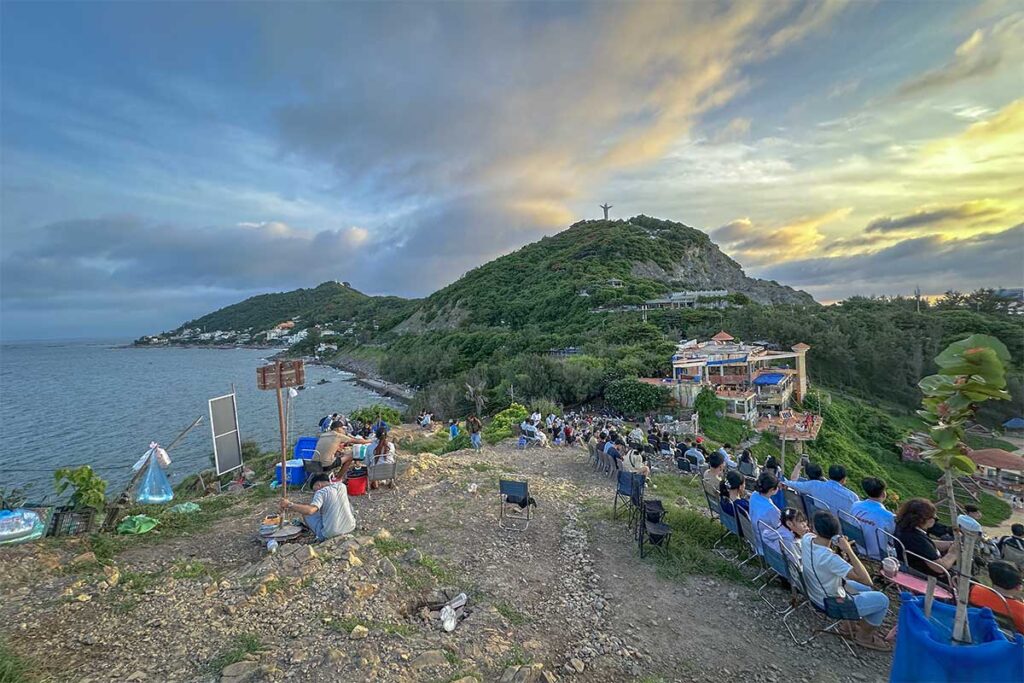
By late afternoon, vendors set up plastic chairs and small drink stalls facing the sea. It’s very typical Vietnamese style: order a cheap iced coffee or soft drink and watch the waves with locals. It’s not fancy — sometimes messy and crowded — but it gives a glimpse of how Vietnamese people enjoy their seaside evenings.
7. Hon Ba Island View
Offshore you can see Hon Ba Island, with its small temple on top. On special low tides, people walk across the sea path to reach it, but from Nghinh Phong Cape it’s mainly a nice view and photo backdrop.
Visiting tips
How to get there
Nghinh Phong Cape is just a few minutes from the center of Vung Tau. The easiest way is by motorbike or scooter, which gives you the freedom to combine it with nearby sights like the Christ Statue or the lighthouse. A Grab car or taxi is just as straightforward and inexpensive. If you drive yourself, expect a small parking fee of around 5,000–10,000 VND.
Best time to visit
For the most pleasant weather, the dry season (November–April) is ideal. In terms of timing, sunrise is calm and quiet with fewer visitors, while late afternoon is the most popular time for photos and sunset views. Midday is usually not worth it: the sun is harsh, there’s almost no shade, and the wind can be very strong.
What to bring
Bring a bit of cash for parking and drinks, as card payments aren’t accepted. Sun protection is essential if you’re visiting during the day — a hat, sunscreen, and sunglasses will make the experience more comfortable. The ground is uneven in places, so good shoes are better than flip-flops if you want to walk around safely.
Things to be aware of
The cape is known for its strong winds, so keep a firm grip on hats and phones, and take care if you’re traveling with children. The area is not very polished — you’ll see abandoned buildings, litter, and makeshift drink stalls — but that’s part of its reality. Vendors sometimes call out to attract customers, but they’re generally harmless if you’re not interested.
Combine with nearby attractions
Since Nghinh Phong Cape is small and doesn’t take long to visit, it makes sense to combine it with nearby places:
- Jesus Christ Statue – located on the same mountain, and one of the city’s most iconic landmarks.
- Vung Tau Lighthouse – another viewpoint with sweeping views over the peninsula.
- Hon Ba Island – visible offshore and sometimes reachable at low tide, making it a unique extra stop if the timing works.
Is Nghinh Phong Cape worth visiting?
Nghinh Phong Cape is one of those places that looks great in photos but feels a bit rough around the edges in reality. The pros are clear: it’s free to enter, the views over the sea are wide and dramatic, and the constant wind gives it a unique atmosphere. The so-called “Heaven Gate” makes for a fun photo stop, even if it’s really just part of an abandoned wall.
On the downside, the area isn’t well maintained. Expect abandoned structures, litter, and makeshift drink stalls, plus crowds in the late afternoon when everyone comes for sunset pictures. It’s not really a peaceful or stylish spot to relax — more a quick stop for views and photos.
Verdict: Nghinh Phong Cape is worth a short visit if you’re already in Vung Tau, especially if you combine it with the Christ the King Statue or the lighthouse nearby. On its own, it’s not a major attraction, but it does add variety and atmosphere to a day of exploring the city.
